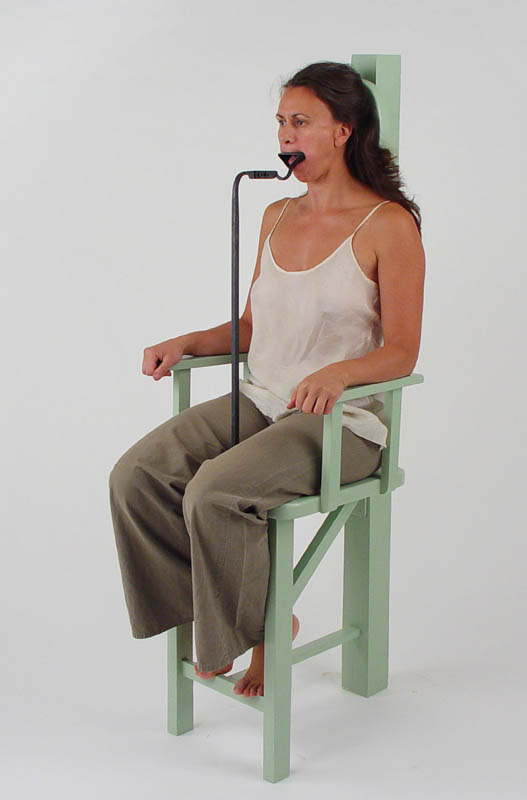Pia Lindman
New York,
United States
Internationally known for The New York Times Project, performed in cities around the world, and her interactive performance and installation Public Sauna at P.S.1 Contemporary Art Center in 2000, Lindman explores how our bodies become the loci of interaction between private and public. Born in Espoo, Finland, Lindman received her MFA in 1996 from the Academy of Fine Arts in Finland and in 1999 as a Fulbright Scholar her Master of Science in Visual Studies at Massachusetts Institute of Technology. She now lives in New York. Currently artist-in-residence at the Computer Science and Artificial Intelligence Laboratory at MIT, in 2008 she will be artist in residence at Kuenstlerhaus Bethanien in Berlin, Germany. She has exhibited widely, among other in New York at Storefront for Art and Architecture Gallery, the Museum of Modern Art, the Sculpture Center, Artists Space; and internationally in Mexico City, Tokyo, London, Berlin, Paris, Vilnius, Warsaw, Vienna, and Helsinki. Her video series Thisplace is in the collection of MoMA, New York and Establishing Shots in the Queens Museum of Art. She is currently a lecturer at Yale University School of Art.
Feminist Artist Statement
My art practice evolves around the themes of social context and space, as well as the performative aspect of making and experiencing art. My interest in social space stems from my studies in architecture, which eventually led me to study for a second master’s degree in art at Massachusetts Institute of Technology (MIT) with public art artists such as Dennis Adams and Krzysztof Wodiczko, and performance artist Joan Jonas. I take the tradition of site-specific art as a point of departure, while addressing social, political, and economic conditions of a site. I create places for negotiation of diverse cultural, physical, and emotional knowledges – like Finnish sauna bathing tradition vs. American sensitivity to nudity. By artistic interventions into social contexts like the Public Sauna at P.S.1 in New York (2000), I aim to provoke passer bys to perform and experience a particular social practice, bringing about a re-evaluation of notions of corporeality and public sphere. Working with video, I perceive the act of recording as performative and part of the content of the work. In residency at the World Financial Center, I submerged a camera in the harbor nearby, in an attempt to create a point of access to an otherwise impenetrable corporate environment further rendered paranoid by the traumas of the World Trade Center disaster. As with video, my approach to drawing is informed by the tradition of performance art. After videotaping myself re-enacting gestures of mourning captured in photographs in the New York Times, I traced these gestures from video stills with pencil. By exhibiting both the tracings and the enactments, I tried to illuminate some of the relationships between a photograph, its mediation, and the idea of original content, in this instance human emotional reaction to terrorism. I have continued a process of learning through embodiment – reenactments and drawing – rather than mime and representation in works such as Corpcomm and with my residency at the humanoid robotics research group at MIT.

Fascia Chair
Custom designed and built chair for making the video Fascia. Designed by Pia Lindman. Craft: Charles Mathis

Fascia Chair
Custom designed and built chair for making the video Fascia. Designed by Pia Lindman. Craft: Charles Mathis

Fascia, Squashed Face
Still from “Fascia” video, part 2, one of the ‘Nine Faces”: “Squashed Face.” Facial expression held fixed for one hour with the help of the steel contraption, while video records the entire duration. The one-hour video then layered into a one-minute time-compressed video.

Lakonikon (part of the New York Times Project)
I have collected images from the “New York Times” issues published between 2002 and 2003. Eliciting the bodily gestures out of the news context (be it mourners of the World Trade Center, a terrorist attack in Israel, a funeral of a Palestinian, a Chechnyan, or a Russian, etc.) I reenacted them in front of a video camera without revealing their original context. I tried to repeat the gesture as accurately as I could—without investing any emotion in the gesture.

Black Square (One drawing of the series. Part of the New York Times Project)
In “Lakonikon,” a video and part of the “New York Times Project,” I reenacted gestures of grief I had found on the pages of the “New York Times.” After videotaping myself in this way, I traced my gestures from video stills with pencil. I have made 400 drawings and I have arranged them into four books titled “Black Square.”

The New York Times Performances
Since 2003 I have performed in public by reenacting gestures of grief I have found on the pages of the “New York Times.” I perform in squares, parks, museums, and malls. The locations are varied and range from a window display at a New York gallery to Foley Square in downtown Manhattan in front of the Freedom of Expression National Monument. In some cities, I have taken the audience on a guided tour and performed for approximately five minutes in front of each monument we visited. This photograph is from my performance tour in Vienna, Austria, in 2004, performing next to the Maria Theresien Fountain.
Websites
Contact
266 East Broadway #B808
New York, 10002
United States
CV
PDF DowloadText, images, audio, and/or video in the Feminist Art Base are copyrighted by the contributing artists unless otherwise noted. All rights reserved.

